| Designation: | V.B.R. |
 |
|---|---|---|
| Manufacturer: | Societe de Constructions Panhard et Levassor | |
| Product type: | Armoured Vehicles | |
| Name: | Reconnaissance Vehicle |
Following the success of the Panhard General Defense VBL (4 × 4) scout car, of which well over 2,200 have been ordered for the home and export markets, in 2001 the company started development work on a new vehicle called the VBR.
The VBR has been developed as a private venture by the company in response to emerging requirements for a vehicle with a similar layout to the existing VBL, but with increased payload and greater electric power capacity to enable it to undertake a wider range of battlefield missions.
The first prototype of the VBR was completed in 2002 and shown fitted with a remote weapon station, armed with a .50 (12.7 mm) M2 machine gun and electrically operated smoke grenade launchers.
To reduce overall life-cycle costs, the Panhard VBR uses proven commercial components wherever possible, these include the diesel engine and transmission.
As of mid-2007, no firm orders for the Panhard General Defense VBR (4 × 4) light armoured vehicle had been placed.
It is possible that this vehicle, or further development of the VBR, could meet some potential French Army requirements for a new generation of wheeled light armoured vehicles with greater volume and payload than existing in service vehicles.
The monocoque hull of the VBR is of all-welded steel armour that provides the occupants with protection from small arms fire and shell splinters with the windows providing the same level of protection as the hull.
In its basic build standard, the VBR has a STANAG 4569 Level 2 protection but with appliqué composite armour, this can be upgraded to STANAG 4569 Level 3 standard.
The floor of the VBR has a slight V-shape to provide increased protection against mines as well as allowing it to slide off of obstacles. There is also an anti-mine liner.
VBR has a payload of 2,000 kg and the rear compartment, (the area to the immediate rear of the commander and driver), has 5.2 m3 of volume which can be used for additional equipment.
The MTU 4R106 diesel engine meets EURO III requirements and is mounted at the front of the vehicle and is coupled to a fully automatic transmission from Allison or ZF. It has permanent 4 × 4 drive with lockable differentials and the axles and wheel reducers are also supplied by ZF.
The air inlet louvres are at the front upper part of the hull with the air outlet louvres in the upper part of the hull sides to the rear of the first road wheel station.
The driver is seated on the left with the commander to his right. Both crew members are provided with a large bulletproof window to their front and a side door. This opens towards the front and has a bulletproof window in its upper part.
Another person is seated on an individual seat to the rear of the commander and driver, and both have a forward opening side door with a bulletproof window in the upper part.
To the rear of the two passengers is additional space for further occupants or stowage. Entry to this area is via a large door that opens to the left with a bulletproof window in its upper part.
There are a total of three roof hatches. One circular hatch above the commander's and driver's position that opens to the rear and one in the centre of the roof, above which various weapons can be installed.
The prototype of the VBR, shown for the first time in June 2002, was fitted with a remote controlled .50 (12.7 mm) M2 machine gun with banks of three electrically operated smoke grenade launchers, either side of the mount, firing forwards. A wide range of other turret and weapon combinations can be mounted on the roof according to mission requirements.
Suspension is of the oleopneumatic type that allows the driver to vary the ground clearance.
Standard equipment on the VBR includes power-steering on the front wheels, lockable differential, anti-skid braking system, central tyre pressure regulation system that allows the driver to adjust the tyre pressure to suit the terrain being crossed, run-flat tyres, air conditioning system and heating. NBC protection of the over pressure type is also provided. In addition, it is fitted with two independent electrical networks, as well as hydraulic and pneumatic generation.
Unlike the earlier VBL scout car, the new VBR is not amphibious, although it can ford to a depth of 1 m. An amphibious kit is, however, under development for the vehicle by Panhard General Defense.
Panhard have proposed a wide range of variants of the VBR including command and control, reconnaissance, as well as being fitted with a variety of weapon systems such as 7.62 and .50 (12.7 mm) machine guns, 20 mm cannons and anti-tank guided missiles.
In mid-2004 the first example was shown at Eurosatory 2004 fitted with UK Thales Land & Joint Systems SWARM, armed with a 30 mm cannon coupled to a day/night surveillance system. SWARM allows the gunner to remain under complete armour protection. SWARM can also form part of a compressive battlefield surveillance system.
Shown for the first time at Eurosatory held in Paris in mid-2006 was the MBDA Multi Purpose Combat Vehicle (MPCV) which has been developed as a private venture to meet emerging requirements for a highly mobile weapon system that can be used for various missions, especially air defence and anti-tank.
The MPCV includes a turret developed by MBDA and Rheinmetall Defence Electronics (RDE) fitted with a stabilised EOSS day/thermal sensor suite with integrated laser range-finder.
The sensor suite has already been fully developed and tested by RDE and can detect and track targets out to a range of 10 km.
To this can be added anti-tank guided weapons (ATGW) or fire and forget surface-to-air missiles (SAM). These are installed two either side of the turret with the sensor package in the middle. Turret traverse is a full 360 degrees with weapon elevation from -10 to +60 degrees.
A remote-controlled .50 (12.7 mm) machine gun is fitted for self-defence purposes and communications equipment would depend on customer requirements. The system would typically be operated by a crew of three, commander, gunner and driver.
Due to different operational and training requirements these ATGW and SAM would not be mixed. For the anti-tank role it would typically be armed with four 3,000 m range MILAN-ER ATGW or in the future up to four 10,000 m range EMM/MCT (European Modular Munition/Missile de Combat Tactique).
For the air defence role it would be four MBDA Mistral 2 fire-and-forget SAM. In each case at least four reserve missiles would be carried internally for manual reloading.
MPCV could operated autonomously or at part of a network enabled capability with target information coming for a variety of other sensors, both for the air defence and anti-tank versions.
Its open architecture would allow further improvements to be inserted as new technology evolves and commonality at sub-system level will help to lower overall life cycle costs.
The first example of the MPCV system was integrated on the chassis of the Panhard General Defense VBR (4 × 4) light armoured vehicle.
|
||||||||||||||||||||||||||||||||||||||||
|
||||||||||||
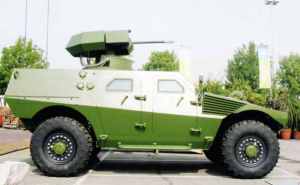 |
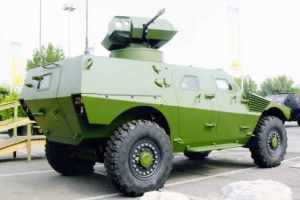 |
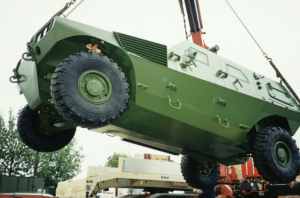 |
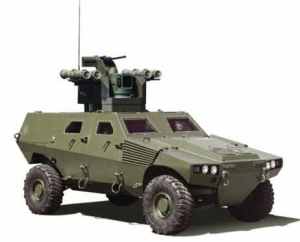 |
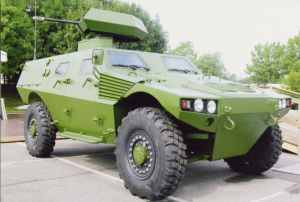 |
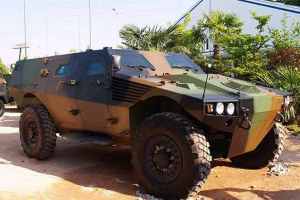 |
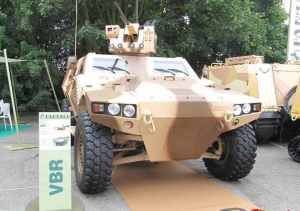 |
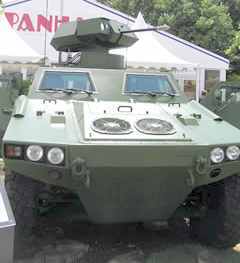 |
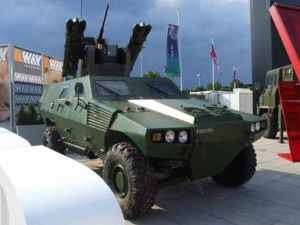 |
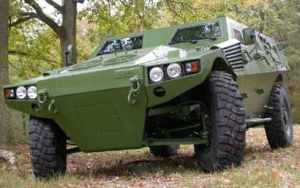 |
 |